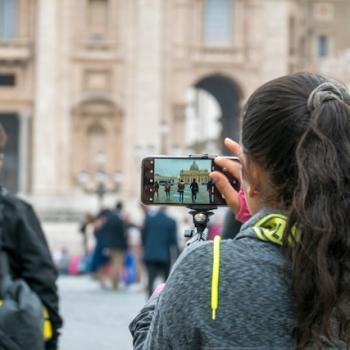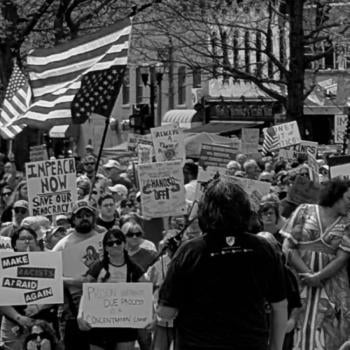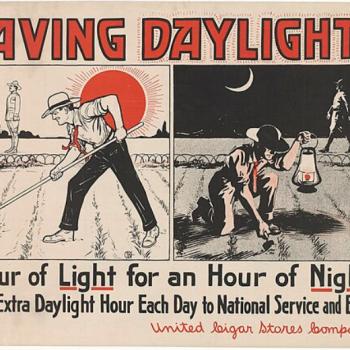Hel, or Hella, is the Norse Goddess of the Underworld who watches over and cares for all those souls who come to Her hall, Helheim, a peaceful realm where the dead are give a chance to rest and reunite with loved ones prior to possible reincarnation. The "Highway to Hel" is something that every person walks from the moment they're born. It is the care with which we cultivate our souls, and the gratitude and courage with which we live each day of our lives.
Over the past few weeks, I've been receiving a number of questions about prayer: Should we pray? Do Heathens pray? How does one pray? Why should we pray? Apparently, prayer is a contested practice within the contemporary Northern Tradition. Part of that stems from converts who grew up in households where prayer was used as punishment, and part of it from 20th-century arrogance and lack of humility. (How many of you cringed or balked at the very thought that humility before the Gods might be a positive virtue?) Whatever the reasons, prayer has been on my mind of late and on the minds of many of my clients. For that reason, I decided to co-opt my own column this week and plagiarize myself, reprinting an extended excerpt from my book Sigdrifa's Prayer. If I had to write on prayer today, I'd say the same things: it is essential and it sustains.
***
I have a friend who maintains that there are only four prayers: "Thank you," "I'm sorry," "Please" and finally "I love You." [1] To that, I would add prayers that simply rejoice in the fact that the Gods are there, that we are Their kin, and that They care for us and take an active role in our lives. Prayer is a celebration, a joyous outpouring of the reality of the deepest, inner chambers of the heart. It forges connections, acknowledges kinship, and grounds us consciously in our spirituality.
I have never seen it as something rigid and lacking in meaning. Even the most formulaic of prayers, like the dancer's tendu and plié, form necessary building blocks to spiritual expression. In many respects, the comparison to the discipline of a dancer's daily practice is quite apt. Prayer, as any mystic knows, is a discipline that trains the mind, heart, and spirit in attentiveness, mindfulness, and devotion to the Gods. Anyone can move to music, but very few people if any, can suddenly, without any practice or training, put on a pair of pointe shoes and pull off a flawless Swan Lake (though watching the attempt might be amusing in a sick, sad sort of way)!
In many respects, it is the same with meditation and prayer -- these things pattern the soul to the touch of the Gods in the same way daily ballet practice develops a kinetic memory in dancers. It provides structure and language, place and an expansive vocabulary by which we can express those experiences of the spirit that often resist the clarification of language. This is especially important given that we live in a host culture whose values, mores, and ideals are antithetical to Heathenry. There is very little that we shall encounter in our day-to-day work that calls our Gods directly to mind. We do not live in a time and a place where our spirituality may be reinforced however unconsciously by family, community, workplace, or culture. It is, unfortunately, the exact opposite.
Additionally, prayer prepares us to encounter what Rudolf Otto, in his seminal work The Idea of the Holy called the "Mysterium tremendens et fascinans," the awesome and terrifying essence of Divine presence. To our ancestors' minds, the dividing line between the sacred and profane was often bounded by terror. We see this in Tacitus's description in Germania of rites enacted in honor of Nerthus:
On an island of the sea stands an inviolate grove, in which, veiled with a cloth, is a chariot that none but the priest may touch. The priest can feel the presence of the goddess in this holy of holies, and attends her with deepest reverence as her chariot is drawn along by cows. Then follow days of rejoicing and merrymaking in every place that she condescends to visit and sojourn in. No one goes to war, no one takes up arms; every iron object is locked away. Then, and then only, are peace and quiet known and welcomed until the goddess, when she has had enough of the society of men, is restored to her sacred precinct by the priest. After that, the chariot, the vestments, and (believe it if you will) the goddess herself, are cleansed in a secluded lake. This service is performed by slaves who are immediately after drowned in the lake. Thus mystery begets terror and a pious reluctance to ask what that sight can be which is only seen by men doomed to die. [2]
Not only was Her priest the only one who could gaze upon or minister to Her unveiled image, but it was incumbent upon him/her to discern when the Goddess was actually present and embodied within Her sacred weoh. [3] There is no reference to how the priest knew this, though Tacitus does make reference to the pervading sense of the holy:





